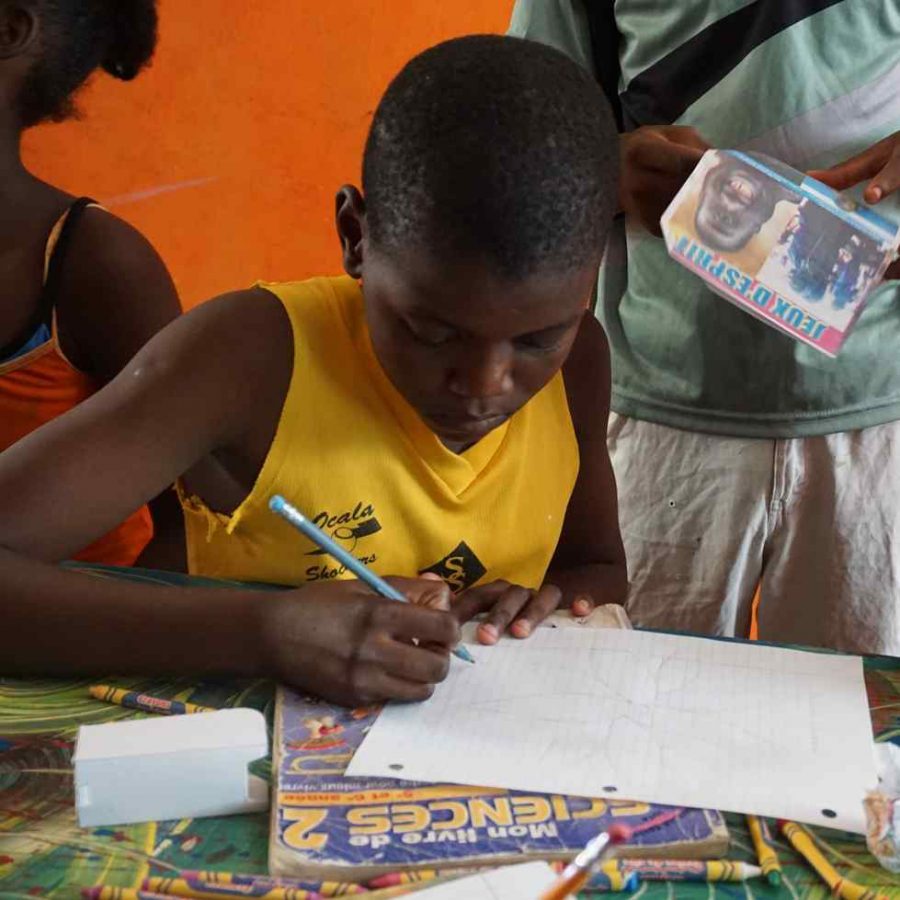Student reflections, Haitian art showing at Blue Wall Gallery
Aug 19, 2019
A window to the island of Haiti is opened at the DeVos Center’s Blue Wall Gallery, located on Grand Valley State University’s Pew Campus. This new exhibit, which opened July 12 and will remain open until Dec. 13, is titled “Wandering Seeds: Experiencing and Engaging Haiti through Study Abroad.” The exhibit includes narratives, reflections and photographs from GVSU students and faculty who participated in a month-long study abroad program, and among the participants’ pieces, Haitian artwork is also displayed.
A Haitian proverb inspired the exhibit’s title. “The tall tree says it sees far,” goes the proverb, but “the wandering seed sees more.” Reading a Haitian proverb a day, Associate professor of geology at GVSU’s Frederik Meijer Honors College and leader of the Haiti study abroad program Peter Wampler said that this proverb really resinated with them.
“We really thought that we were ‘wandering seeds’ on this trip,” Wampler said. “One of the things we tried to do on this trip was to see many different sides of Haiti, the good and the bad, and we’re not trying to hide things that are hard.”
“To me, (the exhibit) is a way to expose students who haven’t thought about study abroad, or who haven’t thought about going to a country like Haiti for study abroad, to go to a place that maybe is unexpected. To see that as a realistic option, will open students’ minds,” said Kelly McDonell, honors academic and enrichment adviser at the Frederik Meijer Honors College and assistant director of the trip.
Wampler said the students and faculty’s motivation in collating writings, photographs and artwork from their travels was to “share a different view of Haiti.”
“We did this to show (students) the kind of vibrancy you see there,” said Ellen Adams, assistant professor at the Frederik Meijer Honors College. Adams served as a mediator between students and Haitian artists during her week-long stay.
Adams said the university is committed to displaying art everywhere on its campus; she posited that art can be seen on almost every wall.
“There is a very, very strong commitment on the part of the art gallery to expose our students to art from all over the world, and expand our understanding of what art can be,” Adams said. “For the students who have traveled and come back and can say to friends and family, ‘This is what my experience was,’ instead of, ‘This is what the media tells me about this place,’ I think that’s the piece that’s transformative. But the art tells a different story. To show the diversity of work that happens in Haiti, again, was to break down some of the stereotypes that (students) might have of what Haiti is.”
Much of the exhibit’s featured artwork is found art, made from the detritus of Haitian streets. Wampler said he found a metaphor in the artwork’s composition — he likened the beauty of art made from debris to the Haitian people’s resilience in the face of adversity.
“The Haitians have taken something that is really hard and difficult, and they have made something beautiful out of it. So that’s another reason why I wanted to do this, to communicate this beauty to other people,” Wampler said.























